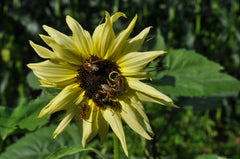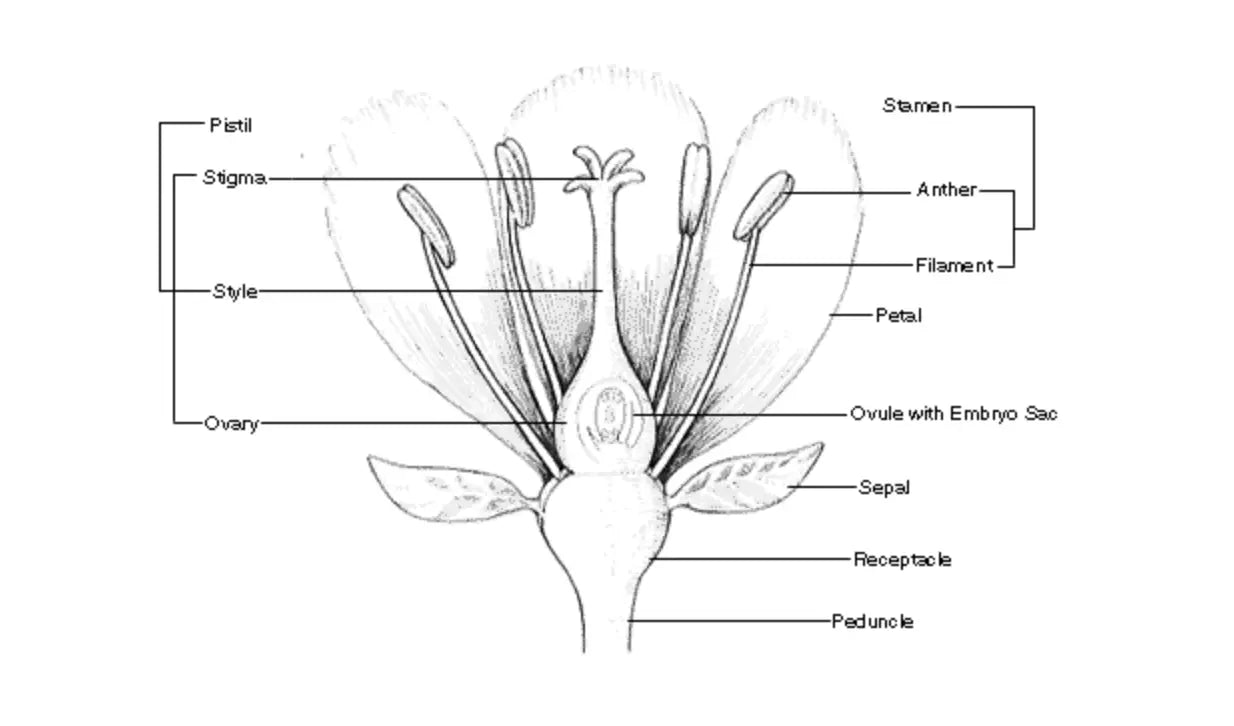A Case For Growing Both!
Pollen- free sounds amazing doesn’t it? No sneezing, no watery eyes, no persistent yellow dust on..well, everything it can reach.
But! We know as gardeners and mother nature's guardians, that pollinating flowers and their creatures are the reason we get to call this place home. That’s why we bee-lieve you should grow both - some for your cut flower collection (think of all those clean kitchen counters adorned with Mother’s Day bouquets) and more for your backyard ecosystem and the world at large.
The quest for a pollen-less sunflower began in the early 1900s through a series of cross-breeding experiments pairing up low pollinating varieties. As agricultural science has advanced, so have our options for sneeze-free blooms. From Strawberry Blonde to Monet’s Pallet, you can find pollen-less varieties in all sorts of shapes, colors and heights.
But doesn’t no-pollen mean no pollinators?
Not quite…

Pollen-less varieties still produce nectar: a sugary liquid that comes from the flower's glands. Nectar is a reliable energy source filled with sugars, vitamins, oils and other nutrients for visiting insects, birds and bats. Like swinging by the coffee shop on your way to stop for groceries, it’s a pick-me-up for pollinators giving them the boost of energy necessary to complete their task fluttering about your garden.
Speaking of the birds and the bees….
Pollen brings a bit more to the table. It’s a fine, powdery, red, orange, or yellow substance produced by the male parts of flowers - the stamens. Wind, rain and of course, pollinators carry it to the female counterparts - the stigma - fertilizing the flower’s ovary. It is rich in protein and fats; bees consume it for energy and as a food source for their larvae.

(Illustration courtesy of The American Museum of Natural History)
Both pollen and nectar play a vital role in the reproductive cycle of flowering plants. Pollen is essential for fertilization while nectar attracts pollinators to the garden and serves as a sweet reward. In fact, butterflies and birds don’t deliberately carry pollen the way bees do, pollen simply sticks to them as they treat themselves to nectar - a procreating stowaway.
Grow both and grow plenty. We need our sunflowers for morale as much as we do for the health of our environment 🌻
Plus, more sunflowers means more sunny days right? Ohhh, we’re only pollen your leg.



For me, seeing pollen accumulate around a vase of sunflowers on my black countertops is a joy.